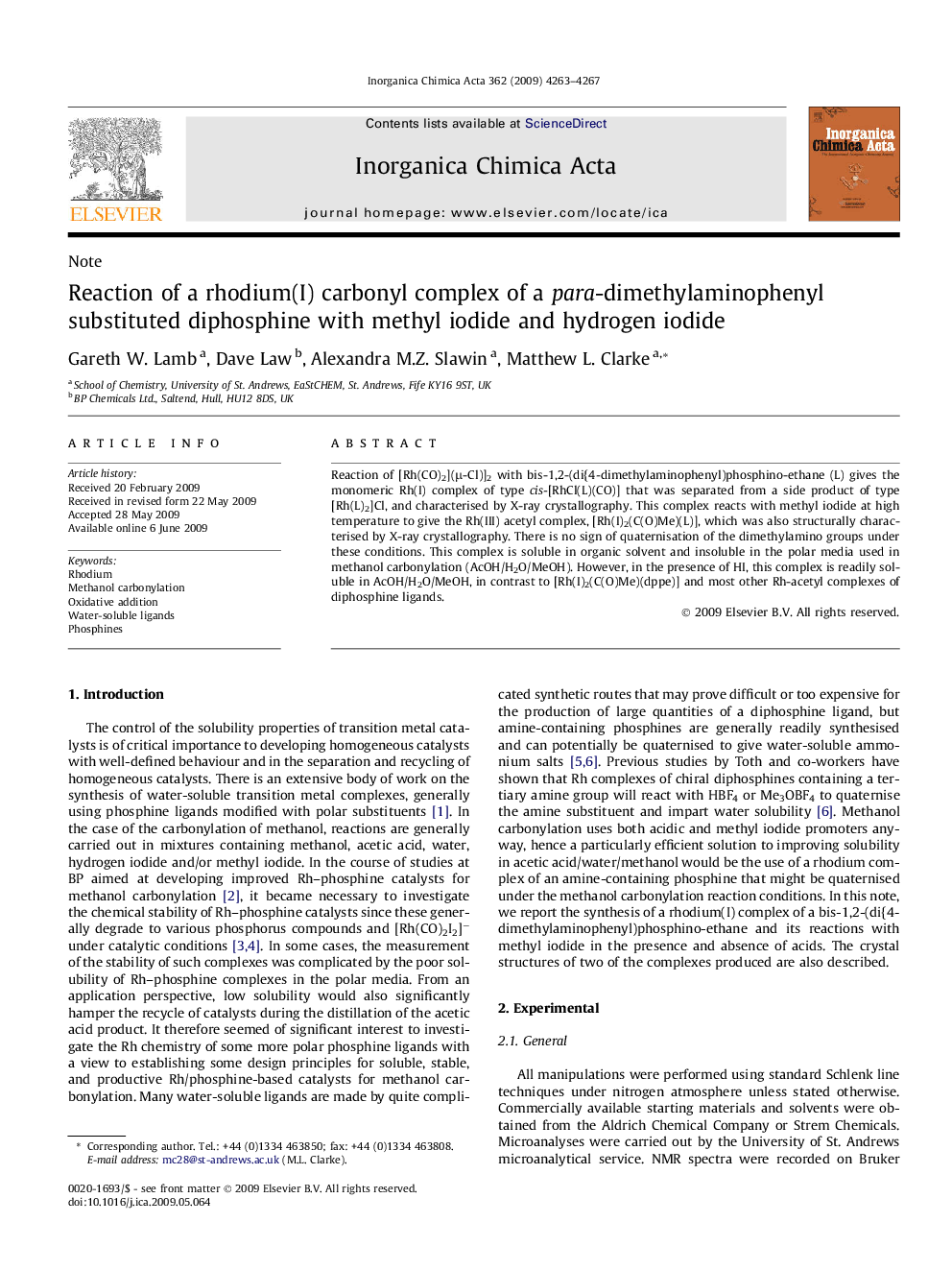| Article ID | Journal | Published Year | Pages | File Type |
|---|---|---|---|---|
| 1308343 | Inorganica Chimica Acta | 2009 | 5 Pages |
Reaction of [Rh(CO)2](μ-Cl)]2 with bis-1,2-(di{4-dimethylaminophenyl)phosphino-ethane (L) gives the monomeric Rh(I) complex of type cis-[RhCl(L)(CO)] that was separated from a side product of type [Rh(L)2]Cl, and characterised by X-ray crystallography. This complex reacts with methyl iodide at high temperature to give the Rh(III) acetyl complex, [Rh(I)2(C(O)Me)(L)], which was also structurally characterised by X-ray crystallography. There is no sign of quaternisation of the dimethylamino groups under these conditions. This complex is soluble in organic solvent and insoluble in the polar media used in methanol carbonylation (AcOH/H2O/MeOH). However, in the presence of HI, this complex is readily soluble in AcOH/H2O/MeOH, in contrast to [Rh(I)2(C(O)Me)(dppe)] and most other Rh-acetyl complexes of diphosphine ligands.
Graphical abstractThe complex shown was prepared from a Rh(I) complex of type cis-[Rh(Cl)(P^P)(CO)] and methyl iodide, (where P^P = para-dimethylamino-phenyl substituted diphosphine). This complex is insoluble in water, but soluble and stable in dilute acid, in contrast to the bis-1,2-(diphenylphosphino)-ethane system suggesting that methanol carbonylation precursors of this type may show enhanced solubility under the reaction conditions.Figure optionsDownload full-size imageDownload as PowerPoint slide
